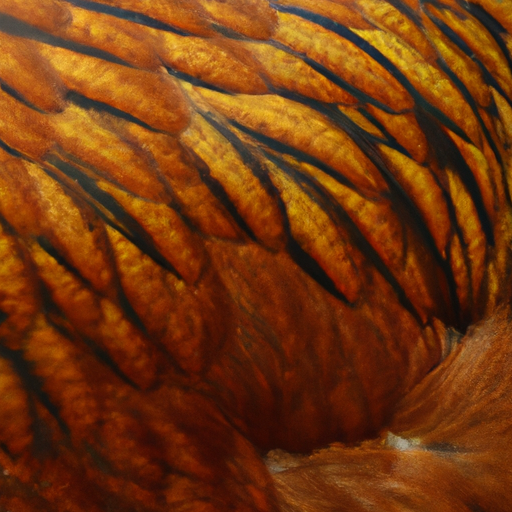
If you’re a poultry farmer or simply an enthusiast with a flock of chickens, you may have come across the issue of vent pecking. But fear not, because in this article, we will explore the world of vent pecking in a flock and provide you with useful tips on how to identify and prevent this behavior. By understanding the causes and implementing preventative measures, you can ensure the well-being and harmony of your feathered friends. So, let’s dive into the fascinating world of vent pecking and discover effective ways to keep your flock happy and healthy.
Understanding Vent Pecking
Definition of vent pecking
Vent pecking, also known as vent cannibalism, is a behavior observed in poultry where birds peck each other’s vents, the external opening of the cloaca. This behavior can range from mild pecking to severe damage of the vent area and can lead to open wounds, infection, and even death if not addressed promptly. Vent pecking is not limited to a specific breed or age group but can occur in various poultry species, including chickens, turkeys, and ducks.
Prevalence in flocks
Vent pecking can be a concern in poultry flocks worldwide, affecting both backyard and commercial operations. The prevalence of vent pecking can vary depending on several factors, such as breed, flock size, housing conditions, management practices, and stress levels. The behavior tends to be more common in confined spaces or overcrowded environments, where the birds may experience increased stress and aggression.
Causes of vent pecking
Vent pecking can have multiple underlying causes, which can be divided into two main categories: environmental factors and bird-related factors. Environmental factors include aspects like lack of space, poor lighting, inadequate ventilation, and inappropriate temperature. Bird-related factors, on the other hand, involve issues within the flock dynamics, such as pecking order establishment, social hierarchies, boredom, and genetic predisposition. It is crucial to identify the specific causes in order to implement effective prevention and management strategies.
Identifying Vent Pecking
Observing flock behavior
One of the first steps in identifying vent pecking is to closely observe the behavior of the flock. Pay attention to any signs of aggression or excessive pecking directed towards the vents of other birds. Watch for behaviors such as frequent chasing, pecking, or bullying. It is also essential to observe the overall dynamics within the flock, as vent pecking can be a result of poor socialization, inadequate space, or overcrowding.
Recognizing physical signs
Physical signs can provide valuable clues in identifying vent pecking. Look for signs of feather loss, particularly around the vent area, as well as redness, swelling, or wounds. In severe cases, blood stains may be visible on feathers or the floor of the coop. Vent pecking can lead to injuries that may become infected or attract flies, so it is crucial to address these physical signs promptly.
Documenting frequency and severity
Keeping a record of the frequency and severity of vent pecking incidents can assist in determining the extent of the problem and monitoring the effectiveness of interventions. Document each observed incident, noting the number of birds involved, the intensity of the pecking, and any resulting injuries. This information can guide decision-making in terms of prevention strategies and help assess progress over time.
Preventing Vent Pecking
Good nutrition and hydration
Providing poultry with a well-balanced diet and access to clean water is crucial for their overall health and can help prevent vent pecking. Make sure the feed contains adequate nutrients and supplements, including vitamins and minerals. A lack of essential nutrients can contribute to abnormal behaviors, including vent pecking. Additionally, ensure a sufficient supply of fresh water to maintain hydration and avoid dehydration.
Appropriate flock size and space
Overcrowding is one of the major factors contributing to vent pecking. Ensure that the flock’s housing allows for enough space for each bird to move around comfortably. The recommended minimum space requirements depend on the species and age of the birds and can be obtained from reputable sources or local agricultural extension services. Adequate space allows for natural social interactions and reduces stress and aggression within the flock.
Environmental enrichment
Providing environmental enrichment can alleviate boredom and reduce the occurrence of vent pecking. Birds need mental and physical stimulation to prevent negative behaviors. This can include various activities such as perches, dust baths, toys, hanging treats, or forage areas. Giving them opportunities to engage in natural behaviors helps divert their attention from vent pecking and promotes overall well-being.
Regular health checks and parasite control
Maintaining the health of the flock is crucial in preventing vent pecking. Regularly monitor the birds for any signs of illness, injury, or parasitic infestations. Diseases and parasites can cause discomfort and stress, leading to abnormal behaviors. Implement appropriate vaccination programs, follow recommended biosecurity measures, and administer parasite control treatments to ensure optimal health conditions within the flock.
Minimizing stress and aggression
Stress and aggression are major contributing factors to vent pecking. Minimize stress by keeping a calm and consistent environment for the birds. Avoid sudden changes in routines, noises, or disturbances. Provide adequate protection from predators, extreme weather conditions, or other potential stressors. Additionally, monitor the flock’s social dynamics and intervene if necessary to prevent bullying or excessive aggression.
Treatment of injured birds
Addressing vent pecking also involves providing proper care for injured birds. Isolate injured birds in a separate area to allow for isolation and recovery. Clean and treat wounds promptly to prevent infection. If necessary, consult a veterinarian for guidance on wound care and possible antibiotics. Keeping injured birds separate from the rest of the flock ensures their safety and prevents further harm.
Addressing Vent Pecking in Existing Flocks
Separating injured birds
When vent pecking occurs, it is crucial to separate the injured bird from the rest of the flock. This prevents further attacks and allows the injured bird to receive appropriate care and rest during the recovery period. Provide a clean and comfortable isolation area, ensuring that it is free from potential stressors and adequately ventilated.
Isolating aggressive birds
If a specific bird is identified as the main aggressor in the vent pecking behavior, consider isolating or removing that individual from the flock. This helps disrupt the established pecking order and prevents the aggressive behavior from spreading to other birds. Observe the isolated bird for any changes in behavior and monitor the flock for signs of improved dynamics.
Using anti-pecking devices
Anti-pecking devices can be effective in preventing vent pecking. These devices, such as beak bits or blinders, are designed to limit the bird’s ability to cause harm through pecking. Beak bits are small clips that prevent the bird from fully closing its beak, while blinders restrict its field of vision. It is essential to consult with poultry experts or veterinarians to ensure the correct application and use of these devices.
Making environmental modifications
Modifying the flock’s environment can help reduce vent pecking tendencies. Ensure adequate lighting levels, as dimly lit areas can encourage aggressive behavior. Evaluate and adjust ventilation to maintain proper air quality and temperature. Remove any sharp edges or protrusions in the coop that may encourage pecking. Additionally, consider providing additional distractions or enrichment to divert the birds’ attention from vent pecking.
Preventing Vent Pecking in New Flocks
Selecting non-aggressive breeds
When setting up a new flock, selecting non-aggressive breeds can help prevent vent pecking. Some breeds are more docile and less likely to engage in aggressive behavior. Research different poultry breeds and consult with knowledgeable breeders or poultry experts to determine which breeds are known for their calm temperament and cooperative flock dynamics.
Proper introductions and socialization
Ensure proper introductions and socialization when adding new birds to the flock. Gradually integrate the newcomers by using devices such as temporary enclosures or wire partitions to allow visual and limited physical contact. This acclimation period helps establish a pecking order and reduces the risk of vent pecking due to sudden social disruptions or territorial disputes.
Monitoring and adjusting flock dynamics
Continuously monitor the dynamics within the flock, especially in new flocks, to identify and address any early signs of vent pecking. Observe their interactions, social behaviors, and overall well-being. Adjust the flock composition if necessary, considering gender ratios, age groups, and the compatibility of individual birds. Taking prompt action when subtle signs of aggression arise can help prevent the escalation of vent pecking behavior.
The Role of Vent Pecking in Broiler Production
Impacts on productivity
Vent pecking can have significant impacts on broiler production. In addition to the welfare concerns for the affected birds, vent pecking can lead to reduced growth rates, impaired feed conversion efficiency, and increased mortality rates. The injuries caused by vent pecking can also create open wounds that are susceptible to infections, requiring additional veterinary treatments and antimicrobial use. Addressing vent pecking is crucial to ensure optimal productivity and sustainable broiler production.
Management strategies for broiler flocks
Implementing specific management strategies can help minimize the occurrence of vent pecking in broiler flocks. These strategies can include providing adequate space per bird, maintaining proper lighting conditions, implementing environmental enrichment, and using appropriate nutrition programs. Regular flock monitoring, prompt separation of injured birds, and addressing any underlying health issues are also essential. By employing these strategies, broiler producers can reduce the risk and severity of vent pecking, thereby optimizing flock performance and welfare.
Case Studies: Successful Vent Pecking Prevention
Including case studies showcasing successful vent pecking prevention can provide real-world examples and practical guidance to poultry keepers. These case studies can highlight the various prevention strategies employed, the results achieved, and any challenges encountered. Sharing experiences and lessons learned from successful vent pecking prevention efforts can inspire and encourage others to take proactive steps in addressing this issue within their own flocks.
Conclusion
Vent pecking in poultry flocks is a serious concern that can lead to significant welfare issues and productivity losses. By understanding the causes, identifying the behavior, and implementing appropriate preventive measures, poultry keepers can effectively reduce the occurrence of vent pecking and create a healthier and more harmonious flock environment. Through a combination of good management practices, regular monitoring, and prompt intervention, vent pecking can be minimized, allowing poultry to thrive and flourish in a safe and comfortable environment.







